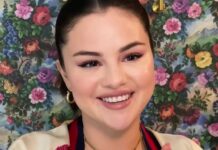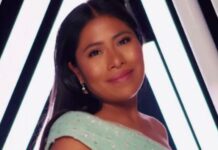For a young Latina growing up in the sixties, the dream of becoming an astronaut might have seemed nothing less than light years away. Born in 1958 in southern California, Ellen Ochoa was one five children and always a diligent student. She earned good grades in all subjects, and had a keen interest in math, science, and writing. Her deep dedication to her education set her apart from most other children, and her interest in science made her different than most girls.
At the time, there was little cultural encouragement for girls to pursue occupations in science, technology, engineering, or math (STEM). In addition to doing very well in her academics, Ellen learned to play classical flute, growing so good at it that she considered pursuing a music major in college. Although Ellen continued playing the flute throughout her life, even with the prestigious Stanford Symphony Orchestra in her graduate years, but she did not give up on her other talent either.
Fortunately, young Ellen had not been entirely without role models. Her high school calculus teacher, Paz Jensen, provided her with the opportunity to work at a rigorous level in high school, and as a woman in the field, she gave teenage Ellen inspiration through representation. Working side by side with other, (mostly male) students in Jensen’s classes gave Ellen a glimpse of the variety of scientific majors they were choosing and perhaps modeled an attitude of trying without fear of failure. This is the spirit that would inform many of her life choices.
Her Academic Years
Giving up a scholarship to attend Stanford, Ellen decided to remain close to her mother, who had separated from her dad, and attend San Diego State University. Given the choice, she would have entered an engineering program instead, embarking on a more direct trajectory to NASA, but this was considered an unsuitable major for a woman. Instead, Ellen chose to study physics, mostly because she thought it would be fun. This decision would send her on a journey that would be a bit longer, with some fascinating stops on the way.
Rosanne Ochoa, Ellen’s mom, had inadvertently drawn her daughter a map of this indirect way of arriving exactly where you want to go. Roseanne always expected excellence from all five of her children, and her middle one, Ellen, credits her mom for instilling in her a rigorous work ethic. Roseanne taught her kids by modeling behavior she expected from them in her studies. Since she hadn’t had the chance to get her degree before starting her family, Roseanne kept her household running while taking classes, one by one, at San Diego State.
Her coursework spanned subjects from biology to social sciences and humanities. At the end of of 22 years, three years after her daughter earned her bachelor’s degree from the same university, Rosanne Ochoa earned her degree in liberal studies. Her mother’s approach — to study a variety of subjects over the course of a long time — reads like a map for Ellen’s own trajectory. In her perseverance and resolve, as well as in her wisdom that even dissimilar seeming knowledge will accrue together to build a bigger and better end product, Ellen takes after her mom.
After graduating from college, Ellen once again thought about pursuing music as a career, but her mother encouraged her to go to graduate school. This time, Ellen would not have to stay home and she would not have to stay away from her passion to solve problems with science. She was accepted to as an engineering fellow to Stanford, where she would pursue her studies and experiments in optics. Mentored by Joseph Goodman, Dr. Ochoa earned her masters and then PhD in electrical engineering.
Inventor and Pioneer
Even her pre-doctoral work at Stanford showed Dr. Ochoa pioneering vision. She continued this early work at her first job at Sandia National Laboratories eventually became a patented system of fiber optics that perceives tiny irregularities in patterns. Since 1987, it has been used to enforce standards of quality control in manufacturing.
Dr. Ochoa kept working with optics in her next job at the NASA Ames Research Center, adding another two patents to her list of inventions. One of these is the basis for robotic guiding programs, in which her work with optics allows the robot to “see”. The other clarifies an image to make it more perceptible. Both of these remote guiding technologies have likely given Dr. Ochoa some early experience “guiding” other machines, such as airplanes, and the robotic arms of spacecraft.
In one of those nice turns of fate, Dr. Ochoa married to an intellectual property lawyer, who can appreciate how amazing it is that she has three inventions to her name. Together, they have two sons, adding householder to her long list of jobs and accolades.
Defining Her Space
In 1985, Dr. Ochoa applied to the NASA space program. Women’s road to space has not better been much better paved than to any other, closer places and it has been a long time in coming for the 40 women who have gone. Russian cosmonaut, Valentina Tereshkova, was the first to travel to space in 1963 aboard the Vostok and the U.S.’s Sally Ride flew the seventh space shuttle mission twenty quiet years for women in space. When Dr. Ochoa applied in 1985, and again in 1987, she wasn’t admitted. She was not used to taking no for an answer and, knowing she had been very close to making it in the last time, in 1990 she was accepted. Training started in 1991.
Astronaut Ellen Ochoa applied to be an astronaut three times before she was accepted: https://t.co/ev6Juc94F2 #hiddenfigures #WomeninSTEM pic.twitter.com/8wevVRrmtW
— Energy Department (@ENERGY) December 23, 2016
Much like her mother, who collected knowledge over the course of years to eventually earn her coveted degree, Dr. Ochoa was served by an endless desire to keep learning ensured her time was well spent between her first attempt to get on the space program and her eventual success. Dr. Ochoa learned how to fly a conventional airplane and continued to work in optics, all of which informed her work as an astronaut. Of course, the actual training program was also a training course, since astronauts must be versed in topics like meteorology, navigation, flight manuals, and orbital mechanics. She also underwent a physical and mental training process to prepare to live under alternate, often grueling, gravitational conditions.
Aside from the emergency training she received on how to help a failing shuttle, Dr. Ochoa was able to put much of her knowledge into practice, beginning with her first space mission in 1993 aboard the Discovery. This mission made Dr. Ellen Ochoa the first Latina ever to travel to space. On this first mission, which studied solar and atmospheric conditions, Dr. Ochoa controlled the Remote Manipulator System or giant robot arm, that launches and catches the satellite. Unlike the giant claw machine at carnivals that always drops the prize at the last minute, Dr. Ochoa’s was effective in gathering the satellite and its data.
She flew on a second solar exploration mission aboard Atlantis, and then two more missions to the International Space Station. On the last one, she once again operated the robotic arm, basically a of largest scale application of the very work she helped develop as an engineer. Dr. Ochoa played her flute, picture here aboard the Discovery flight. Ever the scientist and musician, she noted that while the spacecraft cabin is pressurized, like on an airplane, playing the instrument itself wasn’t too different from conditions on earth, but due to the gravitational differences, the flute was much easier to hold up.
After realizing her dream to work as an astronaut and logging over 1,000 hours in space, Dr. Ochoa returned earthbound to the Johnson Space Center, where she had once trained. This time, she would serve as the Deputy Director of Flight Crew Operations, a position she held between 2002-2012. She then became the Director of the Johnson Space Center, a title she held as the first Latino person and only the second woman ever, once again a pioneer in her field. Dr. Ochoa retired from the center early this year, completing a 30 year career with NASA. But she is nowhere near done.

Educator and Mentor
Throughout her career, Dr. Ochoa has been a role model and mentor. So much of her process has been guided by her own personal thirst for knowledge. By her own account, part of the appeal of her days as an astronaut was both the amount of new knowledge she acquired and its diversity. From having to understand everything from the processes her own body would undergo to the route the craft would take, allowed her to “learn continuously, like you do in school.”
This attitude about learning has already influenced her generosity of spirit toward teaching. Dr. Ochoa has used her place in the bastion of remarkable people and outstanding Latinas to give over 300 talks focused around the importance of STEM learning — the same programs she was advised to stay away from in her youth —especially for young women. So far, numerous schools have been named after her, books about her have been written for young learners, and she is a key figure in promoting technical education for women and minorities.
In addition to her own doctorate, Dr. Ochoa received honorary ones from the University of Pennsylvania, Johns Hopkins University, and Worcester Polytechnic Institute. She has also been the recipient of numerous awards, including “NASA‘s highest award, the Distinguished Service Medal, and the Presidential Distinguished Rank Award for senior executives in the federal government.” She continued to serve on several boards that review technical innovations, advance science, and aeronautics.
Dr. Ochoa has given back to her alma mater, Stanford, by serving as a trustee on their board and currently sits on the National Science Board, until 2022. As a prominent woman in so many fields, she will commonly point out that excellence in many across fields is exactly the profile that NASA is looking for. In retrospect, with her curiosity and steely perseverance, Ellen Ochoa was always headed toward the stars. Now, as she moved out of being an active part of NASA, she intends to continue to inspire others to pursue dreams, especially those of becoming an astronaut.As approachable as she is erudite, Dr. Ochoa recently released an interview on Academic Impact in which she discusses her collage of skills and knowledge, as well as her plans to keep Latina scientists in clear view of Latina girls who will grow up to become them.
For Image credit or remove please email for immediate removal - info@belatina.com







































